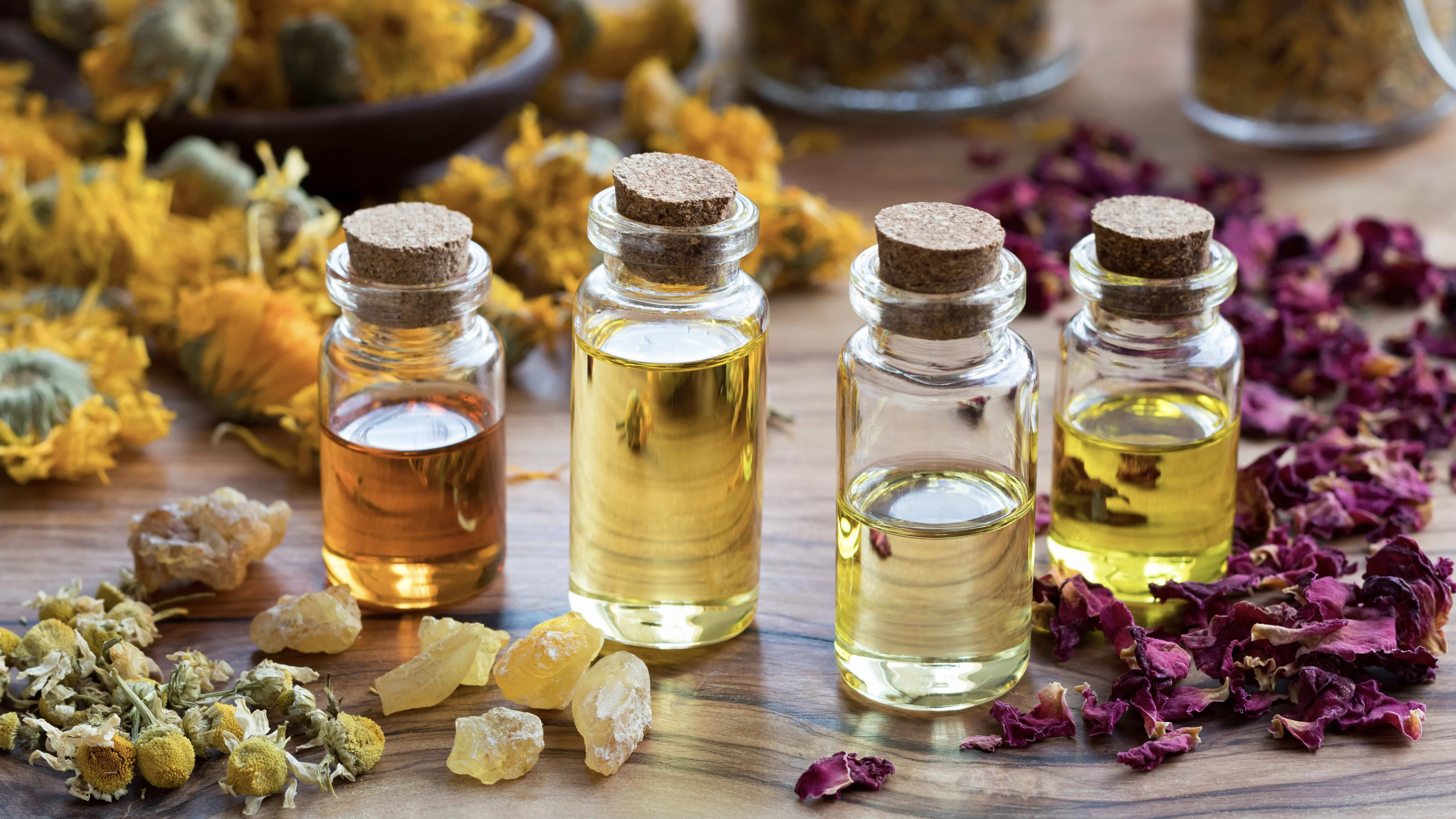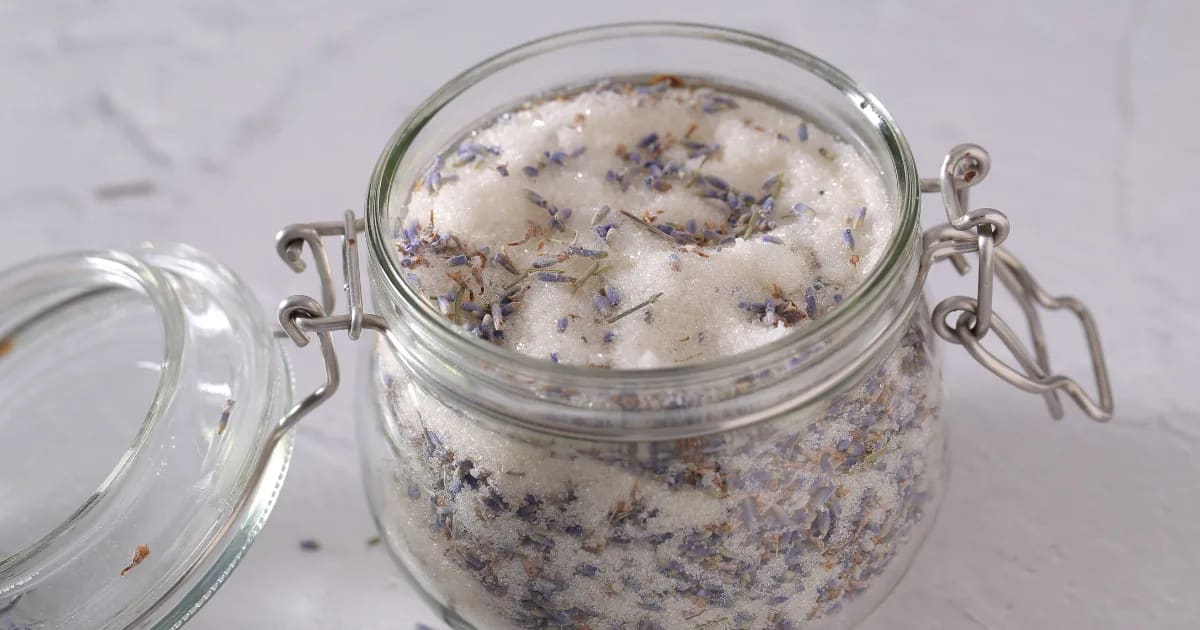What is Clove Bud Oil Good For: Benefits & Uses
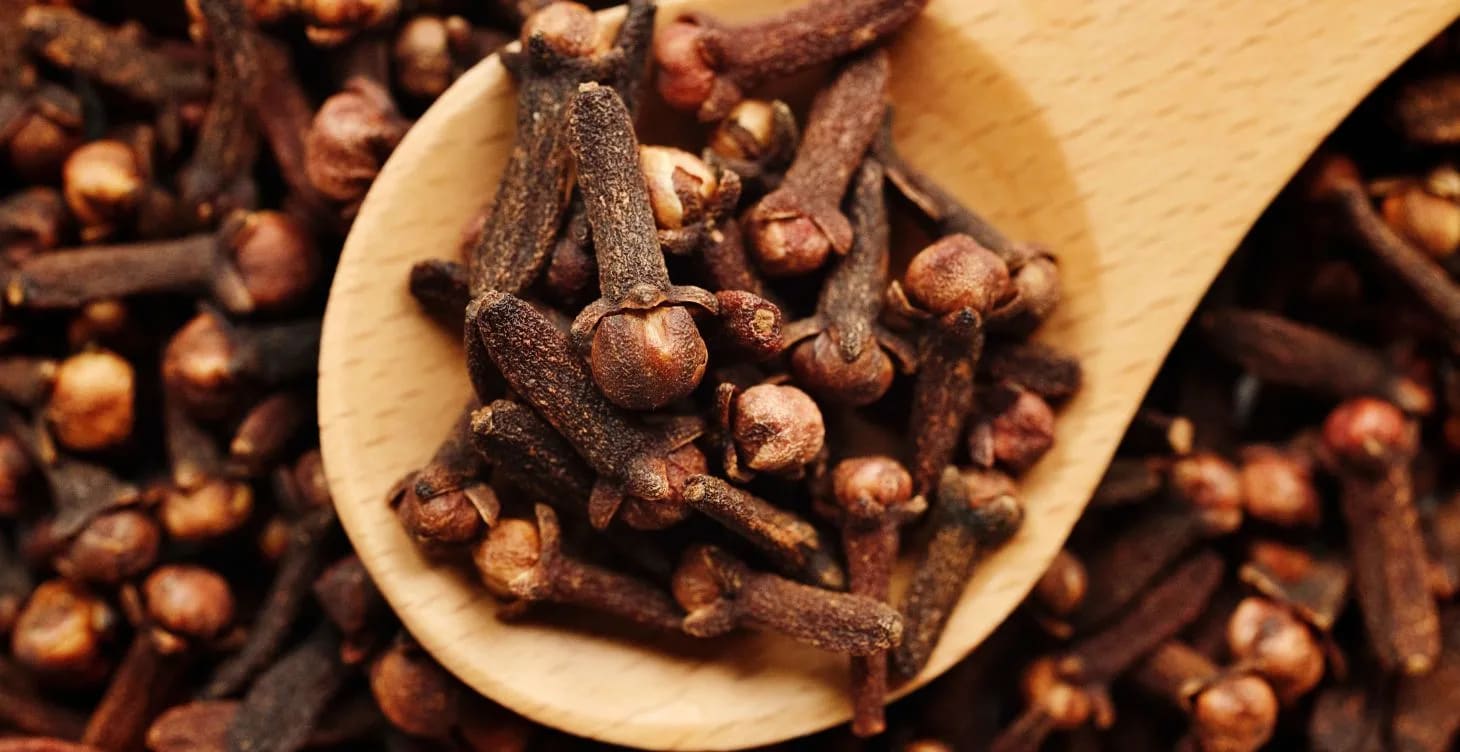
The Fire Within: Exploring Clove Bud Essential Oil
There’s a warmth that lingers in the scent of clove bud. It’s rich and spicy, a warm aroma that kindles the fire within us. For centuries, clove has carried that same quiet fire through kitchens, healing traditions, and sacred rituals.
In this post, we’ll explore clove bud essential oil (Syzygium aromaticum). You’ll learn where this powerful oil comes from, how it works within the body, and what modern research says about its many therapeutic effects, from antimicrobial and antioxidant activity, to pain relief and emotional balance.
We’ll also explore the nuances of safety and dilution, because while clove bud is a marvel of natural potency, it’s also one of the strongest essential oils known to aromatherapy. A few drops can soothe, strengthen, or restore. But used without respect, they can irritate or overwhelm. Before we dive into clove bud’s myriad benefits, I want to note that, despite the inspiring and promising research we have, it should never be considered a replacement for medications prescribed by your doctor.
Settle in with a warm cup of clove tea, breathe deep, and let’s trace this fragrant spice from bud to bottle, from tradition to today, uncovering how its fiery chemistry kindles the body, mind, and spirit.
Where does clove bud oil come from?
Clove bud essential oil begins as a flower that never blooms.
The tall, evergreen clove tree (Syzygium aromaticum) is native to Indonesia’s Maluku Islands. The buds are harvested by hand just before they open. At that stage, they hold the highest concentration of volatile compounds that give clove bud its unmistakable fragrance and potency. Once gathered, the buds are dried in the sun until they turn a deep reddish-brown, and then steam-distilled to yield a golden, spicy-sweet clove essential oil.
The result is a scent layered with warmth and intensity: sweet at first breath, then sharp, resinous, and a little smoky. It’s a fragrance that evokes hearths, spice markets, and ancient apothecaries. No wonder clove was once worth its weight in gold!
Clove first became known in Europe when Marco Polo wrote about it in the year 1298. For centuries, the Arabs had a monopoly on overseas spice trading (including clove), until it was broken by the Portuguese, who instituted their own monopoly over cloves. After another century, the Dutch put their own monopoly in place, and they were so strict about it that they ordered the destruction of all clove trees save for those on a few islands.
By the Middle Ages, clove had become a cornerstone of traditional medicine and cuisine. It was used to flavor food, preserve meats, and ease toothaches. People also made clove pomanders to freshen the air in plague-ridden streets.
Today, most clove essential oil is produced in Sri Lanka, Madagascar, and Indonesia, where the trees thrive in humid tropical climates. The oil distilled from buds is considered superior in aroma and gentleness to oil made from leaves or stems, which can be harsher and higher in eugenol content.
Clove bud’s chemistry is what gives it such power: its primary constituent, eugenol, makes up over 65% of the oil and is responsible for both its remarkable therapeutic effects and its strong, spicy aroma.
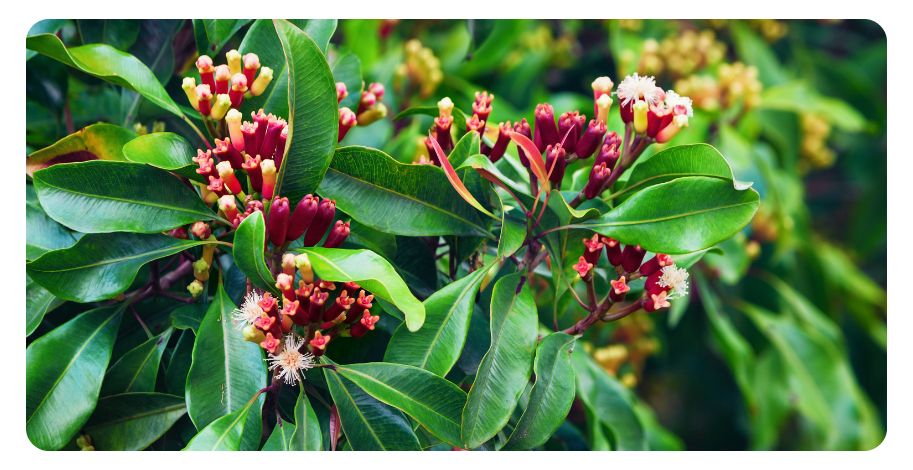
Clove bud oil science & research
Anticancer Potential
Clove bud oil and eugenol show cytotoxic activity against MCF-7 breast cancer cells (Kumar et al., 2014).
Eugenol may help inhibit tumor formation, reduce inflammatory cytokines (IL-6, TNF-α), and modulate oxidative stress.
May enhance chemotherapy effects while potentially reducing side effects (Liu et al., 2014; Barboza et al., 2018).
Antimicrobial Power
Can inhibit bacteria like E. coli, Salmonella, Listeria, Campylobacter (Friedman et al., 2002).
Strong antifungal activity against Candida, Aspergillus, and dermatophytes (Pinto et al., 2009).
Antiviral activity against herpes simplex virus and influenza; disrupts biofilms, including oral biofilm (Tragoolpua & Jaatisatienr, 2007; Vimalanathan & Hudson, 2014; Miladi et al., 2017).
Anxiety, Depression & Cognition
Can increase brain-derived neurotrophic factor (BDNF), supporting mood and neuroplasticity (Yoshifumi, 2006). (Low BDNF is linked to depression, and its restoration is one of the primary mechanisms through which antidepressants work.)
Acts as a MAO-A inhibitor, preserving serotonin and dopamine.
Shows neuroprotective effects against amyloid-beta toxicity (Alzheimer’s & Parkinson’s models).
Immune Support
May increase white blood cell counts and support the immune system’s natural slower, longer-term responses (Carrasco et al., 2009).
Restores immune responses in immunosuppressed models, supporting both humoral and cellular immunity.
Antispasmodic
Relaxes involuntary muscle contractions by modulating calcium in muscle cells (Lima et al., 2011).
Reduces spasm intensity without affecting normal muscle function.
Pain Relief & Anti-inflammatory Effects
Can inhibit inflammatory mediators: nitric oxide (NO), TNF-α, IL-1β (Barboza et al., 2018).
Modulates inflammatory signaling pathways and calms overactive macrophages.
Reduces pain signal transmission in neurons, supporting traditional uses for toothaches (Park et al., 2006).
Antioxidant Support
Neutralizes free radicals and reduces oxidative stress (Wei & Shibamoto, 2010; Pramod et al., 2010).
Helps prevent inflammation-driven oxidative damage.
Cardiovascular Health
Dilates blood vessels, improving circulation and lowering arterial tension (Peixoto-Neves et al., 2014).
Antiplatelet effects may reduce blood clot risk (Chen et al., 1996).
Reduces cardiac damage markers and supports heart function (Barboza et al., 2018).
Liver Protection
Restores antioxidant enzymes, reduces inflammatory mediators, and protects liver structure under stress (Barboza et al., 2018).
Respiratory Support
Reduces lung inflammation and strengthens antioxidant defenses in models of acute lung injury and pollution exposure (Barboza et al., 2018; Kfoury et al., 2016).
Benefits & Uses of Clove Bud Oil
Through each of these bodily systems, clove bud oil emerges as an ally of internal harmony. It balances what is overactive, nourishes what is depleted, and shields what is most vital. Let’s explore a few ways you can bring this powerful botanical into your life.
When you’re blending for the following issues, just keep clove bud’s strong nature in mind. It can irritate skin and mucous membranes. Follow the safety guidelines included in this post (you’ll find them after this Benefits & Uses section) and only use a small amount of the oil.
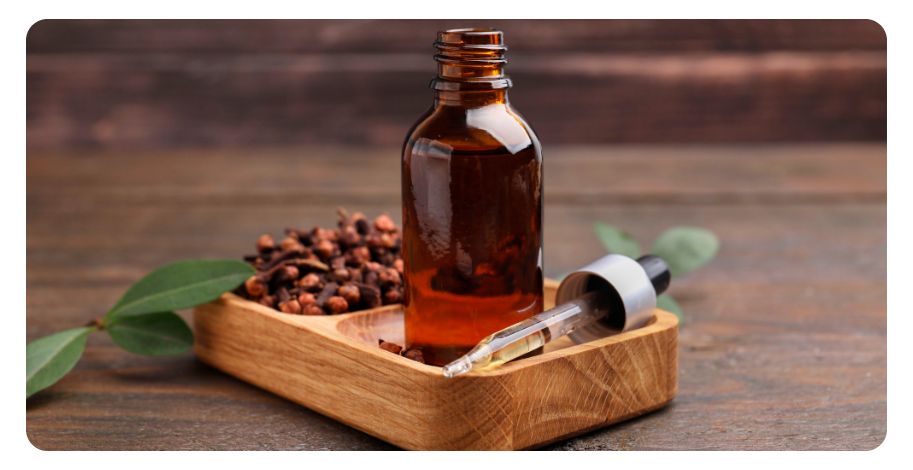
Natural Cleaning
Thanks to its strong antibacterial, antifungal, and antiviral properties, clove bud oil can help reduce germs on surfaces and in the air (Friedman et al., 2002; Pinto et al., 2009; Tragoolpua & Jaatisatienr, 2007).
Adding a few drops to water, or a gentle carrier like vinegar or castile soap, creates a simple, effective cleaner that helps purify kitchens, bathrooms, and other spaces in your home. Its antimicrobial strength makes it especially helpful for high-touch areas, while its warm, spicy aroma adds a comforting, uplifting scent.
Here’s a guide to help you get started with natural cleaning.
Cold & Flu Season
Clove bud oil can be a powerful ally during cold and flu season!
Its antiviral and antibacterial properties help reduce the presence of germs (both in the environment, and within the body), while its warming, anti-inflammatory effects support the respiratory system and may ease congestion (Vimalanathan & Hudson, 2014; Tragoolpua & Jaatisatienr, 2007).
You can diffuse a few drops to create a protective, soothing atmosphere, or add it to an inhaler to help clear nasal passages and support easier breathing. (Just be sure to use a low drop count, and consider the addition of gentle oils, so it doesn’t irritate your mucous membranes.) Clove bud’s ability to calm spasms and ease pain makes it a good ally for spastic coughs and sore throats, too. Add a few drops to natural unscented lotion or a throat salve.
I wrote an in-depth guide to using essential oils for cold & flu season! You can find it here.
Antifungal
Laboratory studies show it can inhibit the growth of common fungi like Candida, Aspergillus, and dermatophytes, which are often behind skin and nail infections (Pinto et al., 2009). For persistent issues like athlete’s foot or toenail fungus, you can blend clove bud oil with carrier oils such as coconut oil (Cocos nucifera) or jojoba (Simmondsia chinensis).
Anxiety & Depression
Create a clove bud blend to help regulate your neurotransmitters (like serotonin and dopamine), while also promoting brain-derived neurotrophic factor (BDNF), which plays a role in resilience and stress recovery (Yoshifumi, 2006).
Try diffusing it or creating a roller blend, so you can take it with you and use it as needed throughout the day. Its warm, grounding aroma can help reduce feelings of tension and promote a sense of balance, making it a gentle, natural companion for stress, anxiety, and low mood.
Jenny had some insightful comments about using aromatherapy for anxiety, which she shared in this short video. If you prefer not to use clove bud, this can give you more ideas. I also wrote a deep dive on the topic here.
Cognition
Studies suggest that eugenol has neuroprotective properties, while also supporting neurotransmitter balance and brain-derived neurotrophic factor (BDNF) levels (Yoshifumi, 2006; Barboza et al., 2018).
Practically, this makes clove bud oil a useful ally during periods of mental fatigue or brain fog. You can inhale it from a diffuser or personal inhaler while studying or working, or add a drop to a stimulating roller blend with rosemary (Salvia rosmarinus ct camphor) or peppermint (Mentha × piperita).
If you ever have trouble focusing at work and staying productive, you’ll find some tips in this post.
Breast & Lymphatic Support
Clove bud oil can be a supportive ally for breast and lymphatic health, thanks to its circulation-boosting, anti-inflammatory, and antioxidant properties (Barboza et al., 2018; Kumar et al., 2014). Studies even suggest that eugenol may help inhibit the growth of certain tumor cells, including breast cancer cells, by promoting apoptosis and reducing oxidative stress and inflammatory signaling.
Topically, clove bud oil can be added in small amounts to carrier oils like jojoba (Simmondsia chinensis) or sweet almond (Prunus amygdalus var dulcis) and used in gentle lymphatic massage to encourage fluid movement and circulate energy through the body. While clove bud oil isn’t a replacement for medical care, incorporating it mindfully into self-care routines can complement overall breast and lymphatic health.
Digestion & Liver Support
If you’ve ever used clove oil for muscle or digestive tension, you’ve experienced one of its most fascinating effects: its ability to help the body let go. Eugenol helps relax smooth muscles, easing cramping, bloating, and digestive tension, while modulating inflammatory pathways that can contribute to gut discomfort.
For the liver, studies show that eugenol helps restore antioxidant enzymes, protect liver cells from oxidative stress, and support detoxification processes (Barboza et al., 2018; Batiha et al., 2020).
Aromatherapists often blend clove oil with gentle digestive-support oils like ginger, sweet basil, or peppermint, either for topical massage over the abdomen or for diffusion. Try it before or after a big meal!
If you struggle with digestive issues, please check out my guide on using aromatherapy to support the digestive system.
Natural Pain Relief
Clove bud oil addresses both the inflammatory and nerve-related aspects of pain. It’s particularly well-known for dental discomfort. (In dental settings, eugenol-based pastes have been shown to reduce post-extraction pain and speed wound healing (Barboza et al., 2018). But research shows it can also help with joint discomfort, muscle soreness, headaches, and general inflammation (Park et al., 2006; Barboza et al., 2018). Clove bud has even been shown to suppress the inflammatory enzyme COX-2.
Diluted in a carrier, clove bud oil can be massaged onto sore muscles or joints. I don’t recommend applying it to the gums unless you’re trained in the internal use of essential oils, but you can make a salve and apply it to the skin over the gums and jaw (using a low drop count to care for the skin of the face).
You can also use clove bud in warming compresses, oils, salves, and butters.
I talk about how clove bud feels in topical pain relief blends in this short video.
Antioxidant Blend
Clove bud oil helps neutralize free radicals, unstable molecules that can damage cells and contribute to aging, inflammation, and chronic disease (Wei & Shibamoto, 2010; Pramod et al., 2010). You can harness this protective power by blending clove oil into your daily self-care routines.
For example, a few drops in a diffuser or inhaler can support your body’s defenses, while topical blends (always diluted in a carrier) can help protect skin from oxidative stress. Combining clove with other antioxidant-rich oils, like frankincense (Boswellia carterii), sweet orange (Citrus sinensis), or bee balm (Monarda fistulosa), amplifies its effects. It’s a simple, natural way to help your body stay resilient against the everyday environmental and physiological stresses that generate free radicals.
Heart Health
Studies show that eugenol helps dilate arteries, improving circulation and gently lowering blood pressure (Peixoto-Neves et al., 2014). It also may reduce the risk of blood clots (Chen et al., 1996). (It's so potent in this area that it's contraindicated for those on clotting medication.) And in vivo animal models, it has been shown to reduce markers of cardiac damage while supporting healthy heart rhythm (Barboza et al., 2018).
Inhaling clove bud oil in a diffuser can provide calming support, helping the nervous system relax and indirectly benefiting heart function. Topically, a few drops diluted in a carrier can be applied to the chest or pulse points for gentle circulation and comfort.
Lung Support
Eugenol helps reduce inflammation in the airways and strengthens the lungs’ own antioxidant defenses (Barboza et al., 2018; Kfoury et al., 2016). This makes it particularly helpful during seasonal respiratory challenges, exposure to pollution, or times of congestion.
You can use it in a diffuser or inhaler to help ease breathing and support the lungs’ natural defenses.
For a topical approach, a few drops diluted in a chest rub blend with carrier oils like coconut oil (Cocos nucifera) or baobab (Adansonia digitata) can be gently massaged over the chest and back.
Clove Bud Oil Safety
A friend once told me a story about using clove bud while traveling. She was staying in a hotel after a long day of driving, and felt herself coming down with a little cold. She decided to diffuse a drop or two of clove bud oil. However, she didn’t have a travel diffuser with her. So she heated water in the in-room coffee pot, poured the water into a styrofoam cup (provided by the room), and added a single drop of clove bud oil. This would allow the oil to gently diffuse into the space. She lay down to rest and closed her eyes… only to open them again after hearing drip-drip-drip. The clove bud oil had eaten a hole in the bottom of the styrofoam cup, and water was dripping all over the carpet!
This is an example of how powerful a single drop of clove bud oil is. It’s among the most powerful and concentrated of the spice oils, and it deserves to be handled with care.
Because eugenol is a phenol, clove bud oil can easily irritate the skin or mucous membranes.
Always dilute it well in a carrier oil before topical application, typically at no more than 0.5% for general applications.
That’s about 2–3 drops per 1 fl oz (30 ml) of carrier.
Even at this low concentration, its warmth and activity can still be felt. We like to blend clove bud with gentler oils, like lavender or sweet orange, to reduce the possibility of irritation.
Avoid using clove bud oil on sensitive or inflamed skin, and never apply it near the eyes, inner nose, or other delicate areas.
We prefer to avoid using this oil for children under 10, or any person with sensitive skin. For guidance on using aromatherapy safely for children, check my post here.
Avoid if you have a clotting disorder, are taking an anticoagulant drug, and after surgery.
Avoid if you have impaired liver function.
Avoid using this oil for animals without specific training. Learn more about using aromatherapy with animals in this post I created.
If undiluted clove bud oil comes into contact with your skin, immediately apply a lipid-based carrier, like jojoba or olive oil.
Clove Bud Oil Myths
Like many beloved botanicals, clove bud essential oil has gathered its share of myths over the centuries. Some are born from folk tradition, others from the internet age of “DIY everything.” The truth is far more nuanced… and, I think, more interesting.
Myth #1: Clove oil and clove bud oil are the same.
Not quite. “Clove essential oil” can refer to several different distillations, from the buds, leaves, or stems of Syzygium aromaticum. Each yields a different chemical profile and aroma. Clove bud oil, distilled from the unopened flower buds, carries the richest, warmest scent and a more balanced composition of eugenol, eugenyl acetate, and β-caryophyllene. Leaf and stem oils, by contrast, contain higher levels of eugenol and can be much harsher on the skin. When it comes to aromatherapy or topical use, clove bud is the gentler choice.
Myth #2: You can apply clove oil directly to a toothache or sore gums.
This one has deep historical roots. Dentists once used clove oil to numb pain. But in its pure form, it can burn delicate tissue and worsen irritation. Today, we understand that this powerful oil must be well diluted or used in professionally formulated oral care products.
Myth #3: Clove oil is gentle because it’s natural.
A potent essential oil like clove bud deserves respect. Its high phenol content makes it a strong antimicrobial, but also a potential skin irritant. Always dilute it properly in a carrier oil, and avoid using it on children, if you have a clotting issue or liver issue, or with anyone prone to sensitive skin. Natural doesn’t necessarily mean mild.
Myth #4: Clove bud oil kills all germs instantly.
It’s true that clove bud oil demonstrates remarkable antibacterial and antifungal activity in lab studies, but that doesn’t mean it sterilizes your countertops or guarantees infection prevention. Its gifts lie in support, not substitution: it can complement good hygiene and bolster resilience, but it’s not a disinfectant in the industrial sense.
Myth #5: Clove bud oil only belongs in cozy fall blends.
Its spicy warmth certainly pairs beautifully with cinnamon and orange in winter, but clove bud oil has more to offer than seasonal nostalgia. This oil that brings us strength in the cold season is here to support us all year round.
Myth #6: Clove bud oil can be used as a spice to flavor food.
I love cooking with the spice clove! It adds rich warmth and nuance to so many recipes. However, I don't recommend using clove bud oil in your food unless you're trained in the internal use of essential oils. (I have a course on internal use here.) It's so strong that it can easily irritate the delicate mucous membranes and systems within the body.
My Takeaway
Clove bud essential oil is bold, fiery, and unapologetically potent, an aromatic embodiment of vitality itself. In the still, steam rises through dried buds and draws out this concentrated spark of life: eugenol, one of nature’s most powerful phenols.
What I find most fascinating is how clove bridges the ancient and the modern. Once tucked into oranges to ward off illness in medieval homes, its active compounds now appear in scientific journals exploring antiviral, anticancer, and anti-inflammatory activity. Yet despite all this pharmacological promise, its truest lesson might be about balance.
Clove reminds us that strength requires respect. That warmth can heal when measured carefully, but burn when used carelessly. It’s a perfect example of why aromatherapy is both an art and a science: a relationship between the human body, the plant world, and the chemistry that connects them.
When you uncap a bottle of clove bud oil, take a moment to breathe in its deep, spicy heart. Remember that within that scent is centuries of healing tradition, and a reminder to wield nature’s power with gratitude and restraint.
REFERENCES
Barboza, J. N., da Silva Maia Bezerra Filho, C., Silva, R. O., Medeiros, J., & de Sousa, D. P. (2018). An Overview on the Anti-inflammatory Potential and Antioxidant Profile of Eugenol. Oxidative medicine and cellular longevity, 2018, 3957262. doi.org/10.1155/2018/3957262
Batiha, G. E., Alkazmi, L. M., Wasef, L. G., Beshbishy, A. M., Nadwa, E. H., & Rashwan, E. K. (2020). Syzygium aromaticum L. (Myrtaceae): Traditional Uses, Bioactive Chemical Constituents, Pharmacological and Toxicological Activities. Biomolecules, 10(2), 202. https://doi.org/10.3390/biom10020202
Carrasco, F. R., Schmidt, G., Romero, A. L., Sartoretto, J. L., Caparroz‐Assef, S. M., Bersani‐Amado, C. A., & Cuman, R. K. N. (2009). Immunomodulatory activity of Zingiber officinale Roscoe, Salvia officinalis L. and Syzygium aromaticum L. essential oils: evidence for humor‐and cell‐mediated responses. Journal of Pharmacy and Pharmacology, 61(7), 961-967. https://doi.org/10.1211/jpp.61.07.0017
Chen, S. J., Wang, M. H., & Chen, I. J. (1996). Antiplatelet and calcium inhibitory properties of eugenol and sodium eugenol acetate. General pharmacology, 27(4), 629–633. https://doi.org/10.1016/0306-3623(95)02089-6
Friedman, M., Henika, P. R., & Mandrell, R. E. (2002). Bactericidal activities of plant essential oils and some of their isolated constituents against Campylobacter jejuni, Escherichia coli, Listeria monocytogenes, and Salmonella enterica. Journal of food protection, 65(10), 1545–1560. https://doi.org/10.4315/0362-028x-65.10.1545
Garabadu, D., Shah, A., Ahmad, A., Joshi, V. B., Saxena, B., Palit, G., & Krishnamurthy, S. (2011). Eugenol as an anti-stress agent: modulation of hypothalamic-pituitary-adrenal axis and brain monoaminergic systems in a rat model of stress. Stress (Amsterdam, Netherlands), 14(2), 145–155. https://doi.org/10.3109/10253890.2010.521602
Kfoury, M., Borgie, M., Verdin, A., Ledoux, F., Courcot, D., Auezova, L., Fourmentin, S. (2016) Essential oil components decrease pulmonary and hepatic cells inflammation induced by air pollution particulate matter. Environmental chemistry letters, 14(3), 345-351.
Kumar, P. S., Febriyanti, R. M., Sofyan, F. F., Luftimas, D. E., & Abdulah, R. (2014). Anticancer potential of Syzygium aromaticum L. in MCF-7 human breast cancer cell lines. Pharmacognosy research, 6(4), 350–354. https://doi.org/10.4103/0974-8490.138291
Lima, F. C., Peixoto-Neves, D., Gomes, M. D., Coelho-de-Souza, A. N., Lima, C. C., Araújo Zin, W., Magalhães, P. J., Saad, L., & Leal-Cardoso, J. H. (2011). Antispasmodic effects of eugenol on rat airway smooth muscle. Fundamental & clinical pharmacology, 25(6), 690–699. https://doi.org/10.1111/j.1472-8206.2010.00892.x
Liu, H., Schmitz, J. C., Wei, J., Cao, S., Beumer, J. H., Strychor, S., Cheng, L., Liu, M., Wang, C., Wu, N., Zhao, X., Zhang, Y., Liao, J., Chu, E., & Lin, X. (2014). Clove extract inhibits tumor growth and promotes cell cycle arrest and apoptosis. Oncology research, 21(5), 247–259. https://doi.org/10.3727/096504014X13946388748910
Miladi, H., Zmantar, T., Kouidhi, B., Al Qurashi, Y. M. A., Bakhrouf, A., Chaabouni, Y., Chaieb, K. (2017). Synergistic effect of eugenol, carvacrol, thymol, p-cymene and γ-terpinene on inhibition of drug resistance and biofilm formation of oral bacteria. Microbial pathogenesis, 112, 156-163.
Park, C. K., Li, H. Y., Yeon, K. Y., Jung, S. J., Choi, S. Y., Lee, S. J., Lee, S., Park, K., Kim, J. S., & Oh, S. B. (2006). Eugenol inhibits sodium currents in dental afferent neurons. Journal of dental research, 85(10), 900–904. https://doi.org/10.1177/154405910608501005
Peixoto-Neves, D., Leal-Cardoso, J. H., & Jaggar, J. H. (2014). Eugenol dilates rat cerebral arteries by inhibiting smooth muscle cell voltage-dependent calcium channels. Journal of cardiovascular pharmacology, 64(5), 401–406. https://doi.org/10.1097/FJC.0000000000000131
Pinto, E., Vale-Silva, L., Cavaleiro, C. and Salguero, L. (2009) Antifungal activity of the clove essential oil from Syzygium aromaticum on Candida, Aspergillus and dermatophyte species. Journal of Medical Microbiology 58, 11, 1454-1462.
Pramod K, Ansari SH, Ali J. Eugenol: a natural compound with versatile pharmacological actions. Nat Prod Commun. 2010 Dec;5(12):1999-2006. PMID: 21299140.
Tragoolpua, Y. and Jaatisatienr, A. (2007) Anti-herpes simplex virus activities of Eugenia caryophyllus (Spreng.) Bullock & S. G. Harrison and essential oil, eugenol. Phytotherapy Research 21, 12, 1153-1158.
Ulanowska, M., & Olas, B. (2021). Biological Properties and Prospects for the Application of Eugenol—A Review. International Journal of Molecular Sciences, 22(7), 3671. https://doi.org/10.3390/ijms22073671
Vimalanathan, S., Hudson, J. (2014) Anti-influenza virus activity of essential oils and vapors. American Journal of Essential Oils and Natural Products. 2(1), 47-53.
Wei, A. and Shibamoto, T. (2010) Antioxidant/lipoxygenase inhibitory activities and chemical compositions of selected essential oils. Journal of Agricultural and Food Chemistry 57, 1655-7225.
Yoshifumi I. (2006) “Effects of Eugenol on the Central Nervous System: Its Possible Application to Treatment of Alzheimers Disease, Depression, and Parkinsons Disease”, Current Bioactive Compounds 2006; 2(1). https://doi.org/10.2174/1573407210602010057



